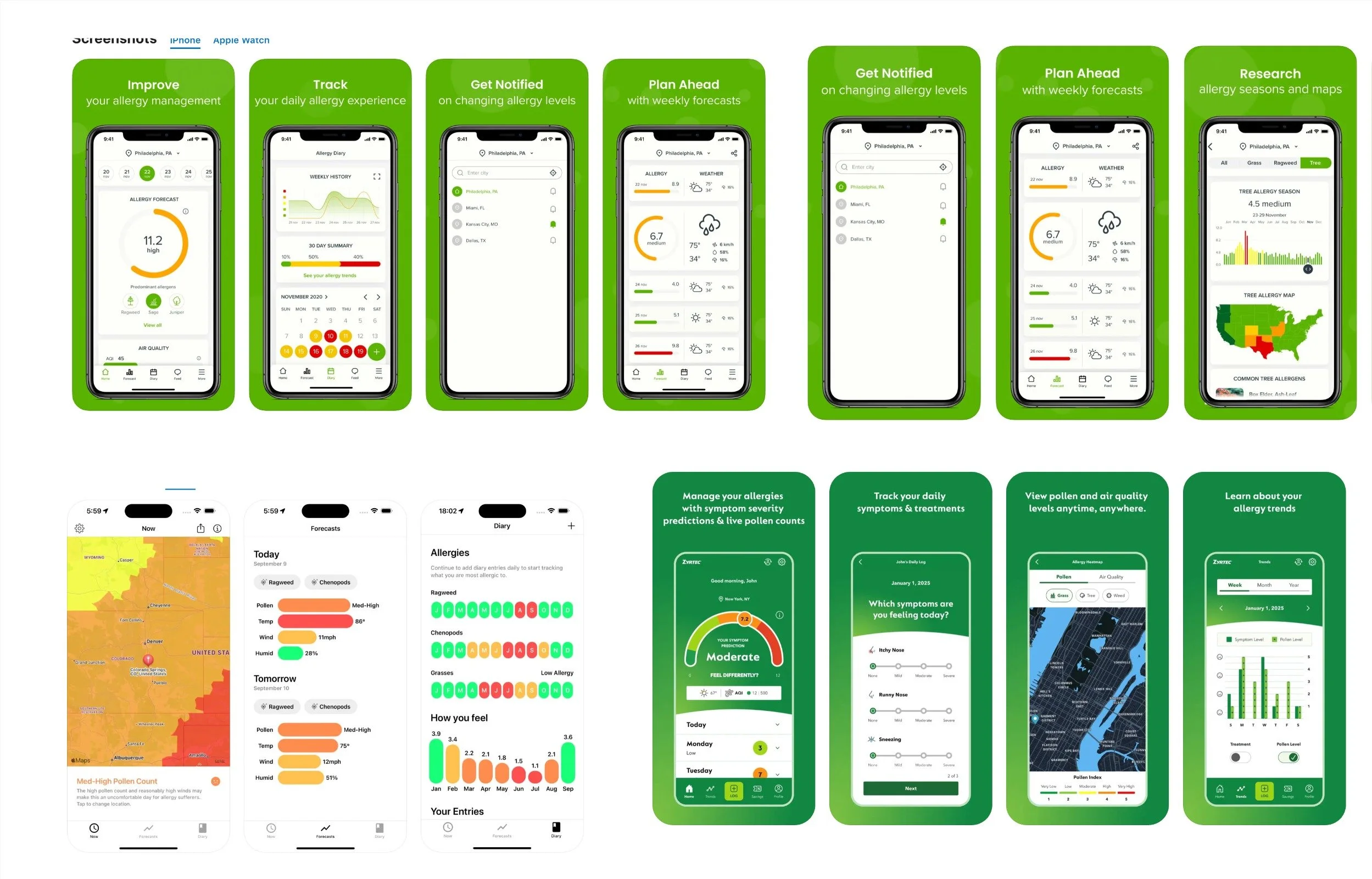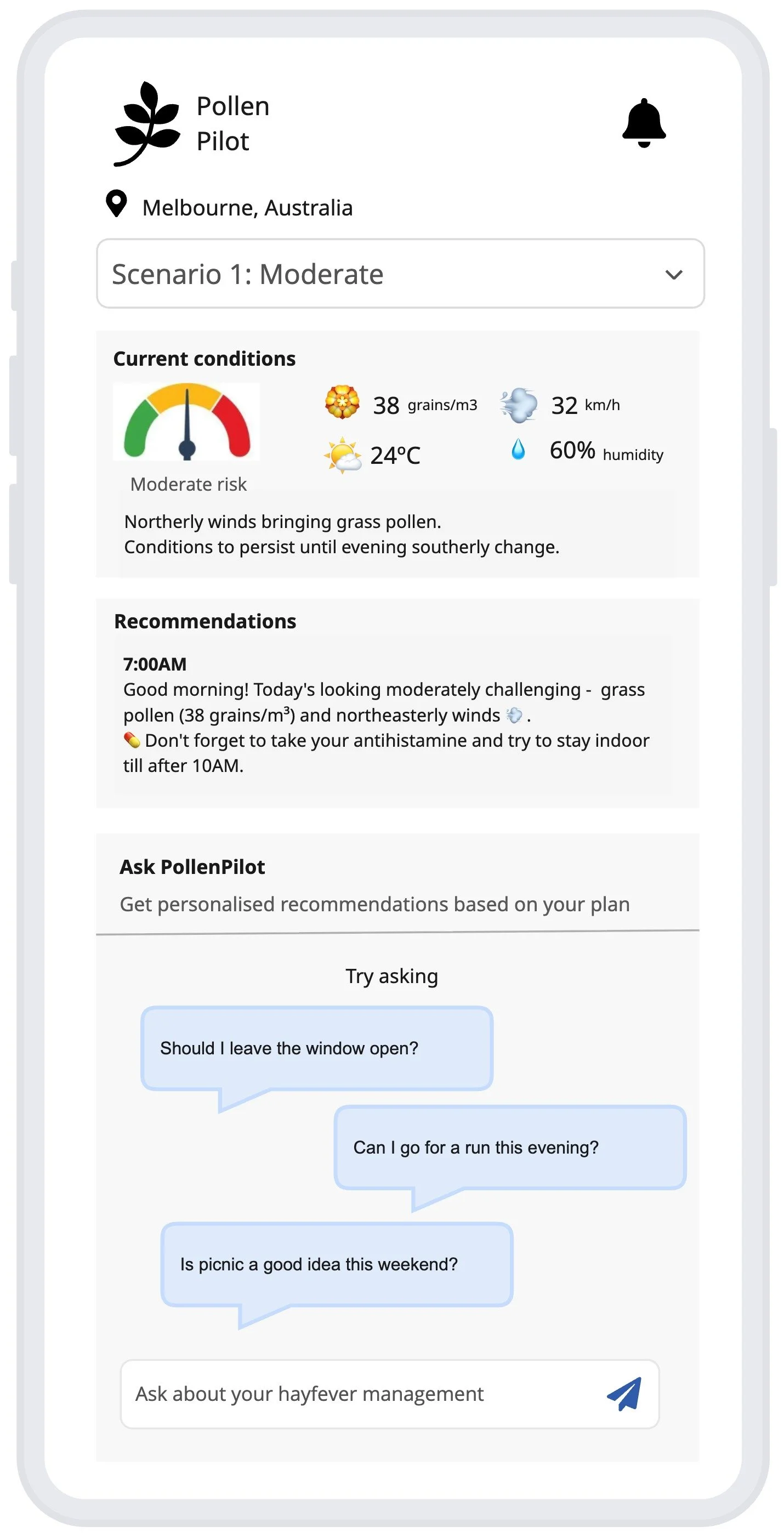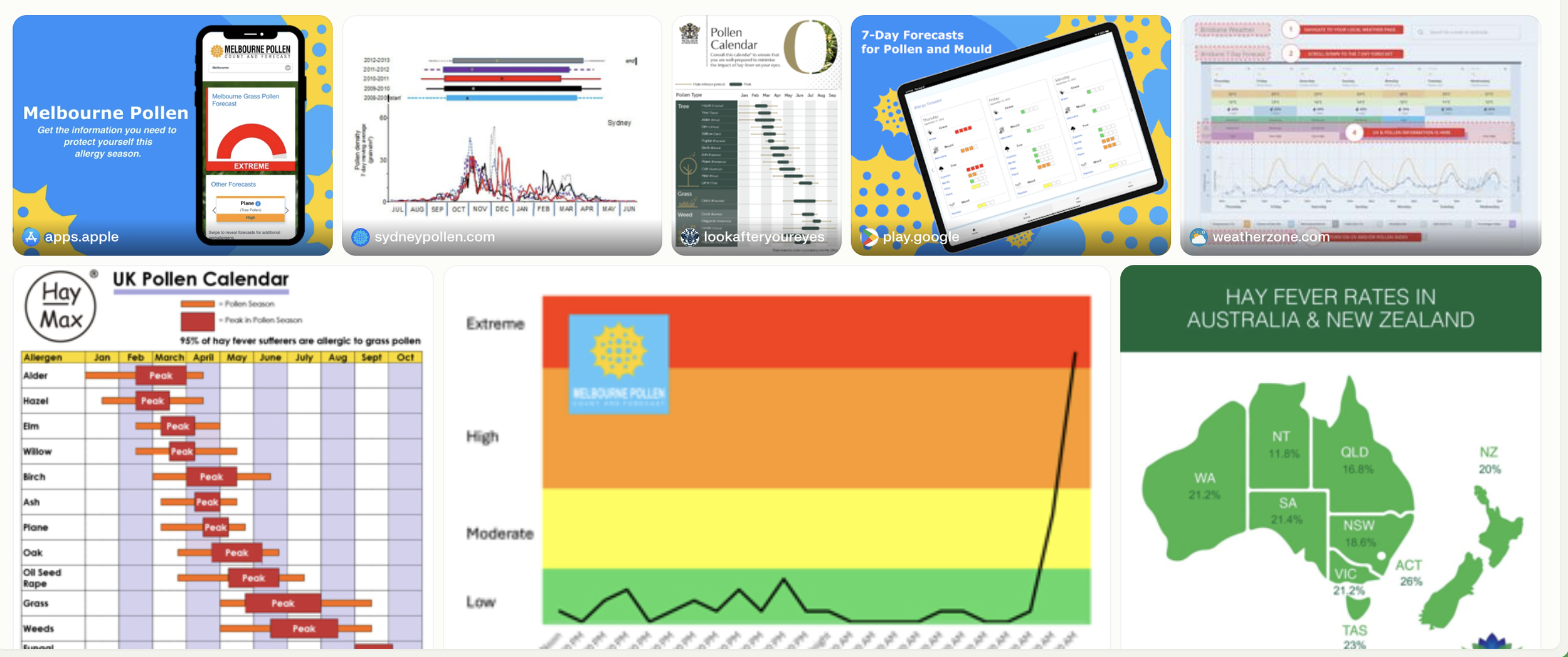PollenPilot
AI-powered Hay Fever Assistant
PollenPilot: A highly contextualised AI-powered app that uses real-time weather data, and pollen count to help pollen allergy/ hay fever sufferers to manage their conditions and make better decisions.
The app delivers contextual advice through natural language interactions, helping hay fever and asthma sufferers proactively manage their conditions.
Problem
Melbourne's extreme seasonal pollen conditions create significant challenges for allergy sufferers, with limited tools available for personalised, contextual management. Existing solutions provide generic advice without considering individual circumstances, activities, or real-time environmental factors.
Key Hypotheses
Hay fever sufferers prefer personalised recommendations delivered in natural language, specific to their context and activities
Proactive alerts are essential on high-risk days when environmental conditions are deteriorating
Research
User Research Foundation
I conducted interviews with chronic hayfever sufferers to understand current management practices and identify key gaps:
Trust through transparency: Users lost confidence when they couldn't correlate their symptoms with app recommendations
Personalisation failures: Existing apps provide generic advice despite individual sensitivities to different allergens
Activity-specific guidance: Experienced sufferers understand when conditions are "bad" but lack granular weather and pollen correlation data to optimize timing for outdoor activities
Prototype Development
Vision & Technical Strategy
Early Pollen Pilot Prototype in Miro
Original Vision: Native mobile app with real-time API integration to weather and pollen data, featuring an AI assistant accessible via text or voice interface.
Strategic Pivots for Rapid Testing:
Timing reality check: Since it wasn't pollen season, real-time data lacked meaningful variation—pivoted to mock data scenarios for different environmental conditions
Platform decision: Built web app instead of native mobile for faster testing cycles
Interaction focus: Prioritised text/chat interface over voice to validate core hypothesis first
Technical Implementation
Core Architecture:
Platform: Web application using Claude API for rapid prototyping and iteration
Data strategy: Mock environmental scenarios based on historical Melbourne patterns
AI Training: Developed core interaction patterns as training examples:
Morning planning consultations
Real-time activity decision making
Multi-day planning ahead
Reactive symptom management
Melbourne-Specific Knowledge Integration: Built comprehensive local context into system prompts:
Seasonal patterns: Local pollen seasons and peak timing windows
Botanical specificity: Melbourne's problematic grass types and their bloom cycles
Wind dynamics: Local wind patterns and their effects on pollen distribution
Weather phenomena: Thunderstorm asthma patterns unique to Melbourne's geography
Collage of existing seasonal data for Melbourne and Australia
Key Insights
I recruited 5 participants with varying severity of allergies to validate the core hypothesis for the product. The testing focused on core user flow and AI interaction patterns.
User Feedback Summary
2 out of 5 users represented the core target demographic
Educational value emerged as an unexpected benefit
Personalisation resonated strongly with users
Voice interaction showed promise for hands-free use cases
Critical Learnings
AI-powered products aren't universal: some users prefer traditional UI interactions
Natural language recommendations create stronger engagement than generic alerts
Contextual awareness (calendar integration) significantly improves recommendation relevance
Lessons Learned
AI Product Development
Reliability vs. Innovation: Balance cutting-edge AI capabilities with consistent user experience
AI as collaborator: Using AI as a thinking partner accelerated both design and development processes
User reference diversity: Not all users embrace AI interaction, suggesting the need to provide multiple interaction modes
Process OptimiSation
Strategic Descoping: Focused on rule-based recommendations over complex predictive models
Parallel Workflows: Maintained simultaneous building, recruiting, and testing threads
Flexible Timeline: Adapted sprint structure based on learning velocity
Impact & Future Opportunities
This project demonstrated the potential for AI-powered, contextual health applications while revealing important constraints around user adoption and technical implementation. The rapid development cycle proved that meaningful AI products can be built quickly with the right tools and approach.






An AI-powered synthesis tool that helps design sprint teams extract actionable insights from expert interviews and user testing transcripts in minutes, not hours.